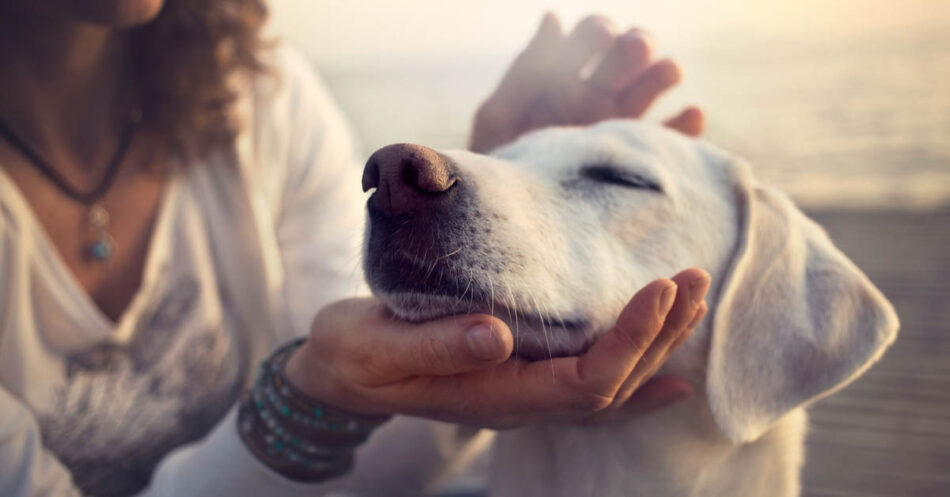
Everything You Need to Know About Hot Spots on Dogs
Every summer, dog parents and their furry best friends look forward to spending lots of time in the great outdoors together. But, before you hit the beach, the park, or the hiking trails, it’s a good idea to learn about a common skin issue that many dogs experience, especially during the hotter months: a dog hot spot.
Chilly was prone to developing hot spots, so over the years, I learned a lot about how to deal with this itchy issue. I’m happy to say that we eventually got the causes of his hot spots under control, so now I know exactly how to bring pups relief as quickly as possible from these common ailments.
Here’s what every dog parent should know about preventing and treating hot spots.
What Are Hot Spots on Dogs?
So what’s a hot spot? Basically, a hot spot is an area of inflamed, infected skin that’s also known as acute moist dermatitis or pyotraumatic dermatitis. Hot spots can happen at any time of year, but they are more common when the air is hot and humid.
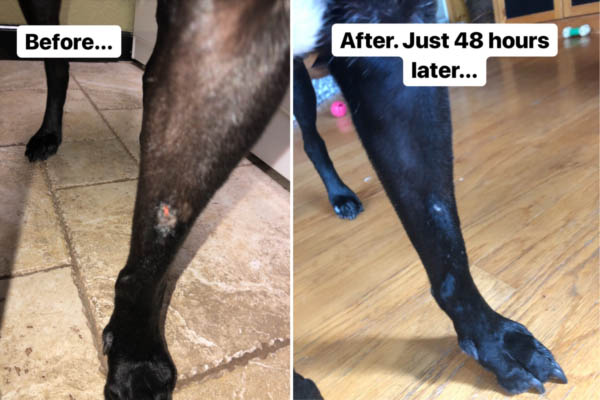
Hot spots are most common on the face, neck, and thighs, but they can affect any area of the body. Chilly tended to get them on his front leg. If your dog develops a hot spot, you’ll notice patches of fur loss and red, itchy skin. It may ooze a little too. Hot spots develop quickly and can be quite uncomfortable for your dog, but with the right treatment, they usually heal quickly too.
What Causes Hot Spots on Dogs?
Hot spots are caused by a bacteria that is usually present on your dog’s skin and mouth. Most of the time, his skin provides enough protection to keep the bacteria at a safe level, but certain conditions allow it to get past those defenses and cause an infection.
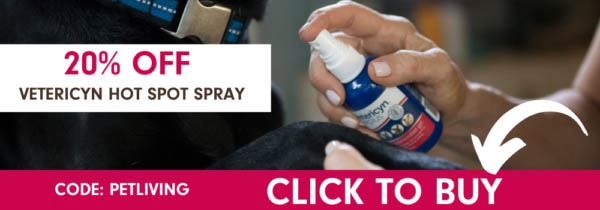
Initially, a skin irritant causes your dog to start licking, biting and scratching the area, which leads to skin trauma allowing bacteria to infect and exacerbate the condition.
It’s important to understand this cycle of irritation-infection because there are two issues that need to be addressed – both the hot spot and its underlying cause.
Chilly suffered from skin allergies, or atopic dermatitis. Most of his hot spots were caused by his allergic itch (the irritant) and his inability to stop licking a spot on his left front leg. Sometimes he’d lick at it for days, allowing bacteria to infect it which would cause a really nasty open sore!
Chilly would also develop hot spots because of his anxiety. Think of it like a nail-biting habit—people who bite their nails usually do so as a result of feeling anxious. They can’t stop themselves any more than an anxious dog who reacts by licking or chewing.
Besides allergies or anxiety, here are a few common things that can contribute to hot spots:
- Fleas, mites, or other external parasites
- Insect stings or bites
- A wound or scrape
- Fungal infection
- Dry skin
- Pain from a previous injury
Fortunately, Chilly was treated for his allergies by our veterinarian with Cytopoint, which is a biologic medication that stops his itch for anywhere from 4-8 weeks. Since he started this treatment, he gets far fewer hot spots than he used to.
Because he had the occasional flare-up, I had the perfect fix to help him recover as quickly as possible.
Soothing Treatment for Hot Spots on Dogs
When Chilly develops a hot spot, it usually signals that it’s time for a veterinary appointment to treat his atopic dermatitis.
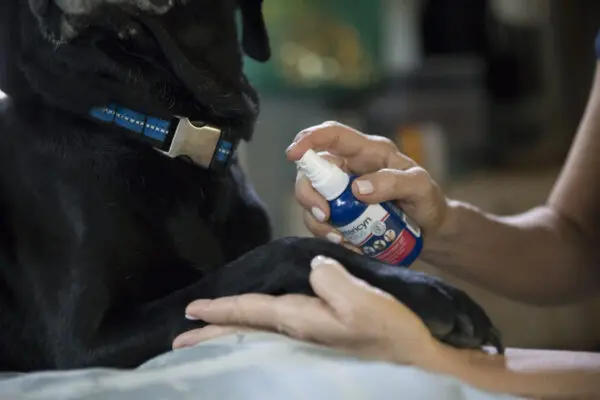
In the meantime, I treat his hot spot the following way:
- Clean the wounded area.
- Apply Vetericyn Plus® Hot Spot Spray.
- Distract him with a game of fetch or a puzzle toy so he doesn’t lick the treatment away. (Although if he does get in a lap or two, I don’t panic because Vetericyn products are non-toxic and safe if ingested.)
- Once it’s dry, spray Vetericyn Plus Antimicrobial Hydrogel.
- Distract him again for about 10 minutes to keep him from licking.
- If I can’t distract him or if it’s time for bed, after I’ve applied Vetericyn Plus Antimicrobial Hydrogel, I wrap the wound with gauze. Then I use this cool vet wrap on top of the gauze.
- I remove the wrap in about four hours or in the morning.
I’ve used this treatment for hot spots in dogs quite a few times, and I’m always super impressed by how quickly the wound begins to heal. I can see a difference in just one day! And as you can see, just two days later it’s almost completely healed.
To help keep any allergens and irritants from causing Chilly’s allergies to flare up, I would also make sure to bathe him regularly with Vetericyn FoamCare Shampoo. The medicated formula is just what he needed to minimize itchiness and keep him squeaky clean!

What Will My Veterinarian Do to Treat My Dog’s Hot Spots?
My treatment worked just fine for Chilly, but like all treatments, what works for my dog might not work for yours. It’s important you go to your veterinarian if your dog is dealing with recurring hot spots that just won’t go away, even with home remedies.
Your veterinarian may outfit your pooch with an Elizabethan collar or bandaging to prevent further nibbling and scratching at the irritated skin. Next, they’ll work to identify and treat the underlying cause that made the skin susceptible to infection in the first place, such as allergies, parasites or behavioral issues. Identifying and treating the underlying cause is crucial for preventing future or recurring hot spots.
If there’s any matted fur surrounding the hot spot, it will be trimmed down until the wound is exposed to the air, which’ll help it heal quickly. Your veterinarian will then clean the area with a chlorhexidine solution, followed by a soothing topical agent.
Quite often, a hot spot creates the perfect environment for a secondary bacterial infection to take hold. In those cases, your vet may prescribe a course of oral antibiotics and anti-inflammatory medications.
How Can You Prevent Hot Spots on Dogs?
To prevent hot spots on dogs, you’ll need to identify and address the underlying cause of your dog’s itching. This could involve parasite prevention, managing allergies, treating other skin conditions, or even dealing with anxiety, as I did with Chilly.
You can also do the following:
- If you haven’t already, see your veterinarian about addressing parasite prevention and/or allergies
- Maintain good hygiene and regular grooming.
- Dry your dog’s coat thoroughly after swimming or bathing.
- Increase daily exercise and mental stimulation to reduce stress or boredom.
- Use puzzle toys or slow-feed bowls for mental engagement.
- Supplement your dog’s diet with omega-3 fatty acids like those found in fish oil. This provides anti-inflammatory properties against plenty of skin infections and promotes a healthy skin barrier.
- Apply pet-safe aloe vera to soothe and decrease itching on your dog’s body.
What Dog Breeds Are Prone to Getting Hot Spots?
Dogs with allergies, fleas, parasites, and skin or ear infections are prone to getting hot spots. But dog breeds with thicker coats and those genetically predisposed are often more prone to developing hot spots. Breeds such as Golden retrievers, English bulldogs, and German shepherds are commonly affected due to their skin conditions, including hot spots. Breeds like St. Bernards, Labradors, Rottweilers, and Tibetan mastiffs are also prone to hot spots, mainly because of their dense fur that can retain moisture and heat, which creates a prime environment for hot spots to develop.
Are Canine Hot Spots Contagious for Other Dogs, Pets, or Humans?
A dog’s hot spot is not contagious to other dogs, pets, or humans. It may spread quickly on the affected dog due to bacteria, but it won’t transfer to others in the household. However, if the hot spot is caused by fungal or parasitic infections, then it may spread to your other pets. In such cases, take precautions to protect all pets and family members by managing the condition with veterinary guidance and maintaining good hygiene.
The Final Woof
Once you know what to look for and how to treat hot spots if they happen, you’re ready to enjoy lots of summer fun with your tail-wagging friend at your side.


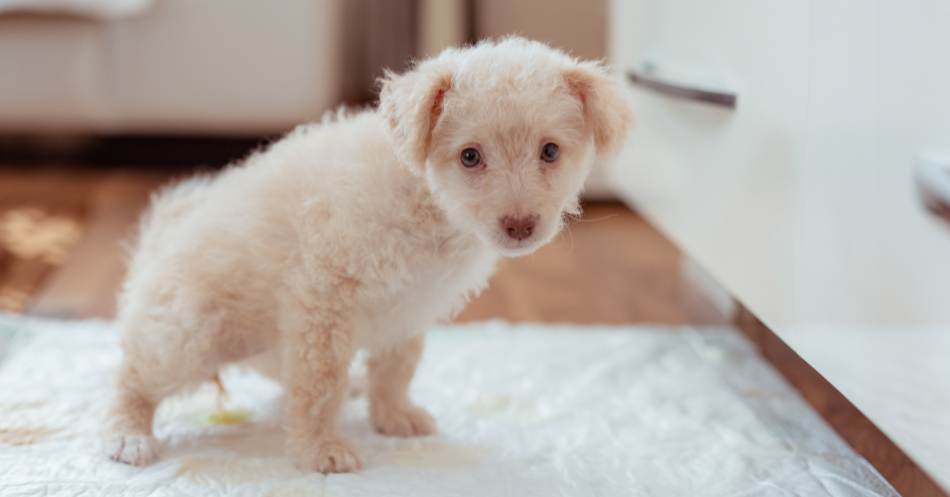
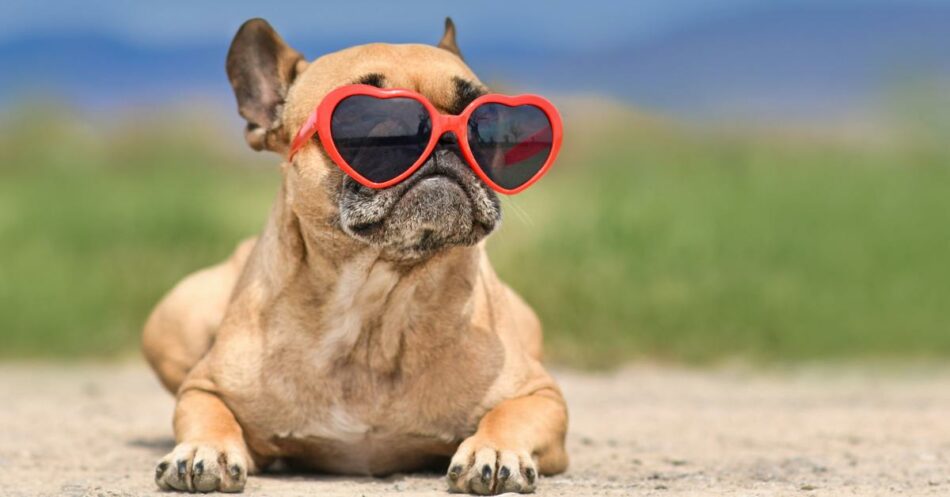
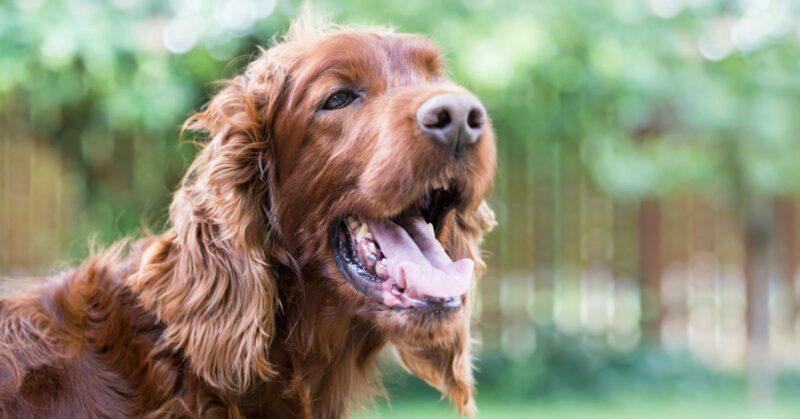
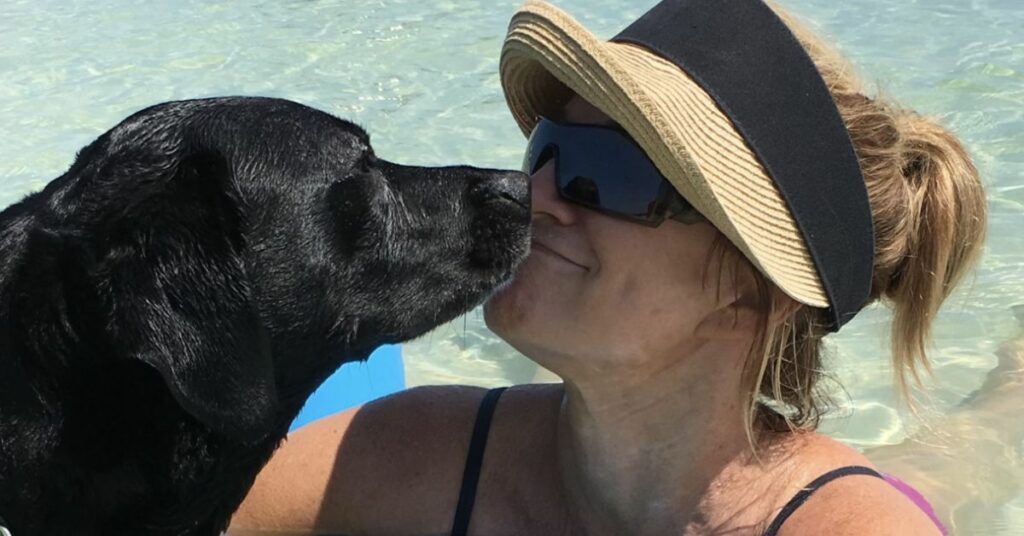
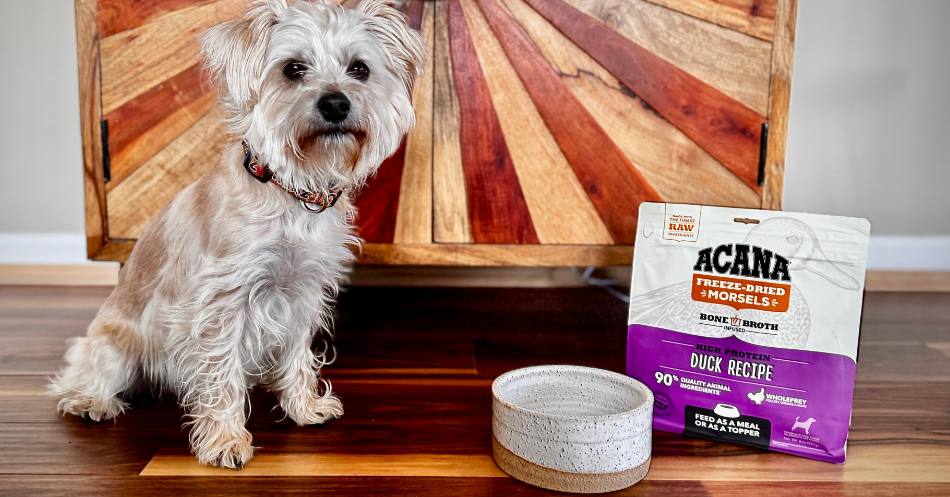

My golden retriever has a large hot spot under on his neck. Our vet is treating it and it is slowly starting to heal. But he has not slept in 4 days. I think when he rests his head the swollen area bothers him. What can we do? . It is very distressing to watch him. He is exhausted and can just about stand. But still won’t sleep. When he does eventually rest his head ,he jearks his head and shakes it.